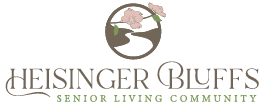The Future of Senior Living: Trends in 2025

As we move further into the 21st century, the landscape of senior living is evolving rapidly. With an aging population and advances in technology, the way we think about aging and senior care is undergoing a dramatic transformation. In 2025 and beyond, senior living communities will offer more than just a place to live—they will become hubs for innovation, personalized care, and enhanced quality of life.
In this blog post, we will explore the top trends shaping the future of senior living. From cutting-edge technology and wellness-focused environments to new models of care, these trends are reshaping what it means to live as a senior in the modern age. Understanding these trends is key for both seniors and their families when selecting the right senior living community.
The Rise of Smart Homes and Healthcare
Technology has already begun to revolutionize senior living, and it will only continue to do so in the coming years. In 2025 and beyond, expect senior living communities to become more technologically advanced, using smart home devices, artificial intelligence (AI), and telemedicine to enhance residents’ quality of life.
Technology Integration
Smart Homes and Devices
The concept of
“smart homes” is already becoming a reality in many senior living communities. Devices such as voice-activated assistants (e.g., Amazon Alexa, Google Assistant), smart thermostats, and automated lighting systems help seniors live more comfortably and independently. These devices can assist with daily tasks, like controlling the temperature or reminding residents to take their medications.
In addition, wearable devices like health trackers (e.g., Fitbit, Apple Watch) will play a significant role in monitoring residents’ physical health. These devices can track vital signs, steps, heart rate, and even detect falls, ensuring that seniors’ health is always being monitored.
Telemedicine and Virtual Healthcare
Telemedicine has grown exponentially over the past few years, and its role in senior living is expected to increase in 2025. Telemedicine allows seniors to access healthcare providers remotely, reducing the need for travel to medical appointments. Virtual doctor visits, mental health counseling, and consultations with specialists will become more routine in senior living communities, improving healthcare access and convenience for residents.
Focus on Wellness and Holistic Care
As the traditional model of senior care evolves, there is an increasing focus on wellness and holistic care. In the future, senior living communities will emphasize not just physical health, but also mental, emotional, and social well-being.
Wellness Programs and Fitness Initiatives
Seniors are living longer and want to enjoy a vibrant, active lifestyle. Senior living communities will continue to offer wellness programs that go beyond basic fitness classes. Expect more emphasis on personalized fitness plans, yoga, tai chi, and other holistic approaches to improve flexibility, balance, and mental health.
There will also be an increased focus on nutrition, with communities offering access to dietitians and tailored meal plans that address the specific needs of seniors. Wellness will be more integrated into the daily life of residents, ensuring they have access to activities that improve their physical, emotional, and mental health.
Mental Health and Social Engagement
Mental health will become a key pillar of senior living in 2025. Communities will provide more programs dedicated to mental wellness, including therapy, social engagement opportunities, and mindfulness practices. Social isolation is a significant issue for many seniors, and senior living communities will work harder to foster a sense of belonging and community, offering everything from group exercise classes to social clubs and hobby groups.
Aging in Place: The Shift Toward More Independent Living
The desire for independence remains strong, even among seniors who may require some assistance. The “aging in place” movement is expected to grow, allowing seniors to remain in their own homes or communities for as long as possible, even if they require some level of care.
Home Modifications and Services
In the future, aging in place will be easier than ever due to advancements in home modifications and support services. Senior living communities will offer flexible living arrangements with services that allow residents to maintain independence. For example, accessible homes with ramps, wider doorways, and bathroom modifications will be more common. Additionally, in-home care services, including housekeeping, meal preparation, and personal care assistance, will become more prevalent.
Connected Communities
Many senior living communities will also focus on creating “connected” environments that allow residents to live independently while staying connected to the community. This includes easy access to support staff, health services, transportation, and social events. Technology will play a crucial role in these communities by enabling residents to communicate with loved ones, caregivers, and fellow residents.
Sustainability and Eco-Friendly Living
As the world becomes more conscious of environmental issues, sustainability will play a significant role in senior living communities. In 2025 and beyond, eco-friendly design, green energy initiatives, and sustainable practices will be integral parts of senior living.
Eco-Friendly Building Design
Many senior living communities will adopt sustainable building practices, such as energy-efficient appliances, solar panels, and green roofs. These designs will reduce the environmental footprint of senior communities while also lowering utility costs for residents.
Sustainable Food Practices
Sustainability will also extend to food practices. Communities will offer locally sourced, organic food options to ensure residents enjoy healthy and environmentally friendly meals. Greenhouses and community gardens may become more common, allowing seniors to grow their own food while also engaging in physical activity and social interaction.
Intergenerational Living and Community Integration
Another trend shaping the future of senior living is intergenerational living. In the coming years, senior living communities will increasingly collaborate with schools, universities, and other age groups to create more inclusive and diverse living environments.
Cross-Generational Programs
By fostering relationships between seniors and younger generations, these communities can promote mutual understanding, reduce social isolation, and enrich residents’ lives. Programs may include mentoring, shared activities, or even childcare partnerships, where seniors can provide support or wisdom to younger people in the community.
Community-Based Housing
Another aspect of intergenerational living is the design of senior communities that are integrated into the broader neighborhood. Seniors will increasingly live in mixed-age communities, where they have access to services, shops, and parks alongside younger people. This integration will help seniors feel more connected to society and reduce the sense of isolation that can sometimes come with aging.
Customization and Personalization of Care
As we move into the future, the demand for personalized care will continue to rise. Senior living communities will focus on creating care models that are flexible and tailored to the unique needs and preferences of each resident.
Person-Centered Care
The future of senior living will be centered around person-centered care, where the needs and preferences of the individual are at the forefront of decision-making. Residents will have more control over their daily routines, activities, and care plans, leading to greater satisfaction and improved quality of life.
Tailored Health and Wellness Plans
With the integration of advanced technology and data analytics, senior communities will offer highly customized health and wellness plans. These plans will track everything from diet and exercise to mental health and cognitive abilities, ensuring residents receive the right level of care and attention.
Increasing Role of Artificial Intelligence and Robotics
In the near future, artificial intelligence (AI) and robotics will become integral parts of senior living communities. These technologies will be used to enhance care, support independence, and improve overall safety.
AI-Powered Health Monitoring
AI will be used to track residents' health data in real-time, providing caregivers with immediate insights into their physical and mental status. AI systems will help predict potential health issues, enabling proactive care and reducing the need for emergency interventions.
Robotics for Assistance and Safety
Robots will assist in a variety of tasks, from delivering meals to helping seniors with mobility issues. Robotics will also play a role in ensuring safety, with robots that can monitor for falls, assist with medication reminders, and provide emergency alerts if necessary.
Conclusion
The future of senior living is an exciting one, filled with innovative solutions designed to improve the lives of seniors. From technology-driven healthcare to personalized care plans and intergenerational living, the trends shaping senior living in 2025 and beyond promise to create more dynamic, inclusive, and supportive environments for older adults.
At Heisinger Bluffs, we are committed to staying ahead of these trends to provide our residents with the highest standard of care and services. By embracing innovation, sustainability, and personalized care, we strive to create a community that supports seniors in every stage of their aging journey.
Frequently Asked Questions
What technologies will play a significant role in senior living in 2025?
Key technologies include smart home devices, telemedicine, AI-powered health monitoring, and robotics. These will help seniors live more independently, manage their health, and stay connected to their communities.
How will senior living communities focus on wellness in the future?
Future senior living communities will offer personalized wellness programs that include fitness classes, nutrition counseling, mental health support, and social engagement activities to improve residents’ physical, mental, and emotional well-being.
What is aging in place, and how will it evolve in the future?
Aging in place allows seniors to remain in their homes or communities as they age, with support services provided as needed. This trend will evolve with more home modifications, flexible services, and integrated technologies to help seniors live independently longer.











